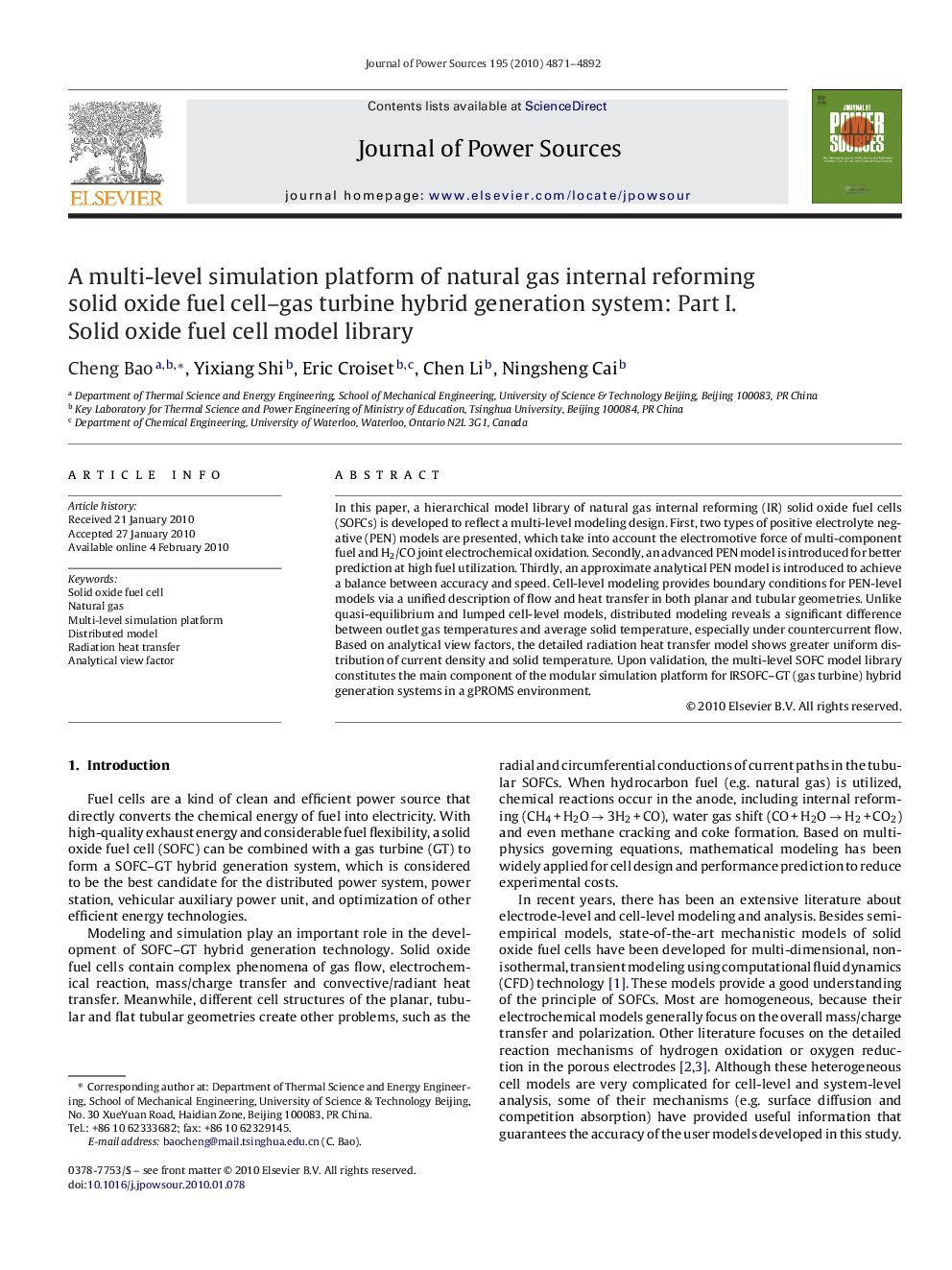| Article ID | Journal | Published Year | Pages | File Type |
|---|---|---|---|---|
| 1290108 | Journal of Power Sources | 2010 | 22 Pages |
In this paper, a hierarchical model library of natural gas internal reforming (IR) solid oxide fuel cells (SOFCs) is developed to reflect a multi-level modeling design. First, two types of positive electrolyte negative (PEN) models are presented, which take into account the electromotive force of multi-component fuel and H2/CO joint electrochemical oxidation. Secondly, an advanced PEN model is introduced for better prediction at high fuel utilization. Thirdly, an approximate analytical PEN model is introduced to achieve a balance between accuracy and speed. Cell-level modeling provides boundary conditions for PEN-level models via a unified description of flow and heat transfer in both planar and tubular geometries. Unlike quasi-equilibrium and lumped cell-level models, distributed modeling reveals a significant difference between outlet gas temperatures and average solid temperature, especially under countercurrent flow. Based on analytical view factors, the detailed radiation heat transfer model shows greater uniform distribution of current density and solid temperature. Upon validation, the multi-level SOFC model library constitutes the main component of the modular simulation platform for IRSOFC–GT (gas turbine) hybrid generation systems in a gPROMS environment.
